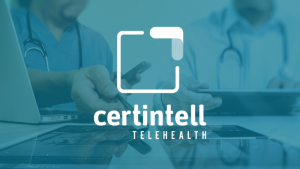Remote Patient Monitoring (RPM), has always been available for chronically ill patients. Now more than ever clinicians are seeing it as a way to engage patients safely from the comfort of their home and improve patient outcomes.
Webinar Presenters:
- Jon Regis, MD
Remote Patient Monitoring (RPM) exploded onto the health care scene following the COVID-19 pandemic, as many physicians used the service to closely monitor symptoms before they developed into a more serious illness. However, the service has always been available and billable for many clinicians, especially for those treating chronically ill patients. During Medical Economics’ webinar entitled “Remote Patient Monitoring: Building a Virtual Practice,” Jon Regis, MD, said RPM can only grow from here.
What is RPM?
The Center for Connected Health Policy defines RPM as the following:
“Remote patient monitoring (RPM) uses digital technologies to collect medical and other forms of health data from individuals in one location and electronically transmit that information securely to health care providers in a different location for assessment and recommendations. This type of service allows a provider to continue to track healthcare data for a patient once released to home or a care facility, reducing readmission rates.
Monitoring programs can collect a wide range of health data from the point of care, such as vital signs, weight, blood pressure, blood sugar, blood oxygen levels, heart rate, and electrocardiograms.”
As a clinical leader at his practice, Regis harped on the value of RPM and how it can benefit both staff and patients. For patients, RPM can help improve health outcomes and reduce hospitalizations. For clinicians, it can be a newfound source of patient engagement and revenue.
Patients Take the Lead
Regis’ interest in RPM grew out of a desire to stay connected to his practice’s 70,000+ patients. Obviously, not all patients were not eligible for RPM, but Regis found that even just enrolling patients with hypertension and diabetes, which account for 6-7 thousand of his patients, had a significant impact. Regis recommends other practices looking into RPM to start small, as well.
RPM, Regis says, gives patients better access to their providers and empowers them to take control of their own health. By supplying patients with a “red bag” with a glucometer and blood pressure machine, Regis’ practice saw a significant decrease in patient hospital admissions. But when launching an RPM program, it’s important for clinicians to communicate the need for patients to take responsibility, especially when it comes to regularly taking vitals.
“They have to know that this red bag is part of their prescription,” Regis said. “You’re no longer going to be able to come in here and get a script and go home. You’re going to have to participate in your care.”
His patients have come to appreciate the consistent connection as well; Regis has seen his patient population over 65 responds particularly well to just receiving a phone call from their provider. This patient-provider relationship is becoming increasingly imperative to develop in a value-based medical world as well, Regis argued.
How to Get Started with RPM
Regis’ RPM program stemmed from an initiative to take clinical burden off staff through a virtual medical office.
Regis originally wanted to conduct Annual Wellness Visits (AWVs), as it was another source of revenue for his practice, as well as a way to engage patients in preventive and proactive care. He hired a person whose primary responsibility was patient outreach and scheduling for these AWVs. The clinic saw visits increase to 60-70 a week. However, this only put more pressure on the internal clinic staff. That’s why Regis decided to outsource the AWVs to a separate virtual medical office, that now handles AWVs, quality training and control, and RPM. His advice for getting started in this virtual environment is to find a partner to help navigate the intricacies.
A partner like Certintell, can help a provider start or scale their RPM program, conduct AWVs and patient outreach, as well as check for patient eligibility to help avoid as many claims denials as possible.
Regis said not checking for eligibility and the subsequent claims denial was an initial hurdle the clinic faced, but just like any other service a clinic is effectively billing for, RPM and AWVs can become a pillar of care through a little bit of patience and experimentation. His advice is to also continue to look at what codes a practice can bundle and use to maximize the time.
Patient engagement is key to the success of an RPM program, so for clinics that can, consider gamification or other incentives that will keep patients invested in RPM and general health programs that are being delivered from the comfort of their home.
Regis said he thinks the virtual office will generate as much revenue as the clinical office eventually and how we think of a medical office is going to change.
“The pandemic, I think, forced the country, in various sectors, into uncharted territory. I think the changes you’re going to see in health care are going to last forever,” Regis said.



